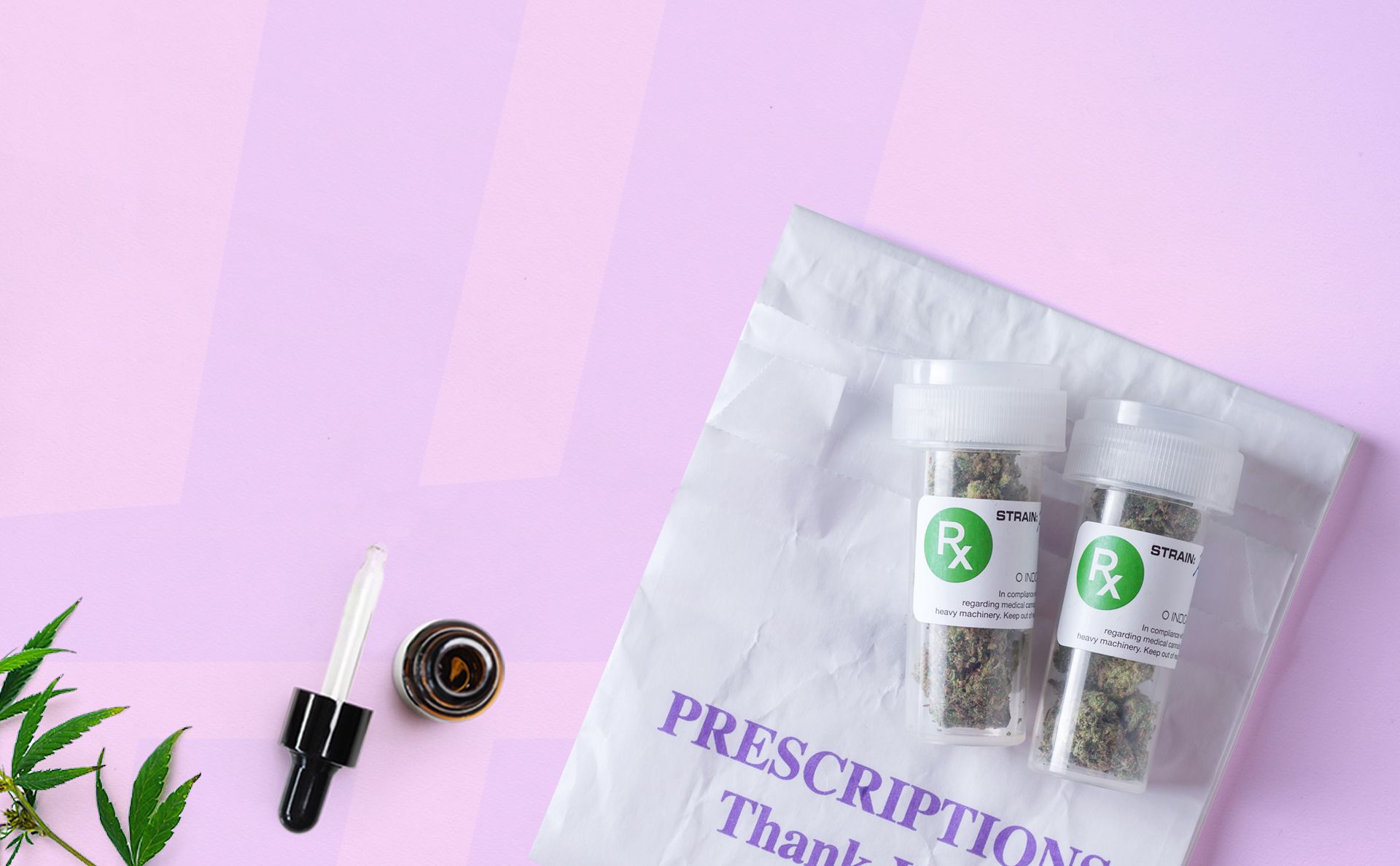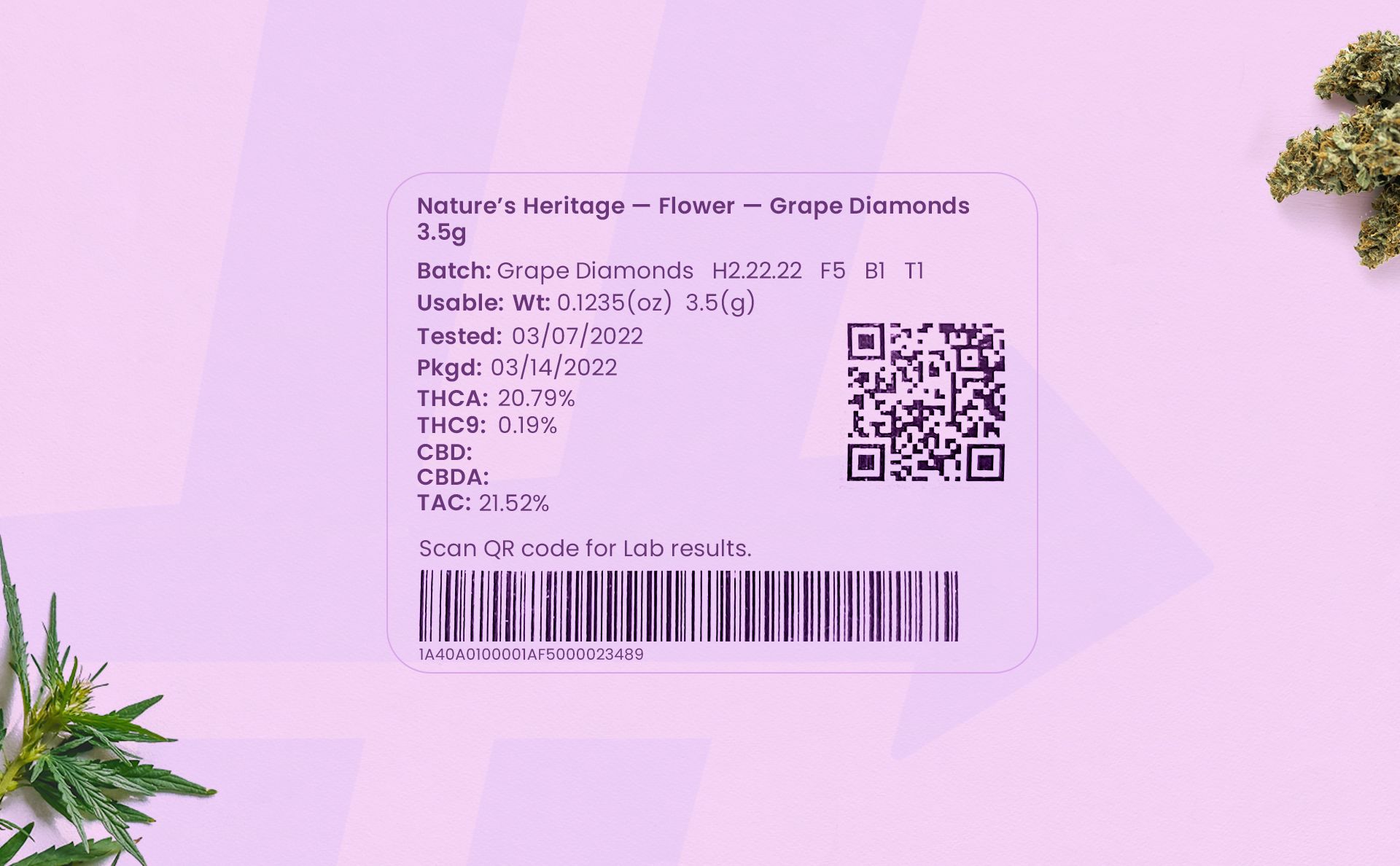How to Read Cannabis Product Labels
As a newer cannabis consumer, it can be a daunting challenge to read the product labels on flower, concentrate, or edibles you buy at dispensaries. This chapter breaks down what product labels mean. These tools help you ensure you are consuming the safest and best products from quality companies and becoming a more conscious and knowledgeable cannabis consumer.

Understanding what cannabis product labels mean can be confusing and overwhelming, especially for the Canna-Curious. With all of the information found on your packages of flower, edibles, concentrates, and other products, you might think it’s overkill. However, these labels are designed to help ensure you are consuming the safest and highest quality products.
Naturally, some products can appear to be safe or high quality, when you’re really getting sold by fancy marketing. This chapter will equip you with the tools and mindset you need to sift through the claims and help you put the safest products in your body.
We’ll also break down the typical product label you find on dispensary shelves, and explain what you’re reading.
In general, there are two types of consumers: those that read every product label and ingredients list, and those that do not. This is true for food, cannabis, and almost everything else we put in our bodies. We are addressing the first of the two consumers in this chapter, as we believe it’s of the utmost importance to fully understand what we eat or otherwise consume.
MJ Biz Daily put out a report indicating how a lack of accuracy in lab reporting and product labels is an industry-wide problem, and HashDash is committed to addressing this issue.
How To Read Cannabis Product Labels
Learning about what cannabis product labels mean is one of the best ways to start developing your basic knowledge of the plant. While a good dispensary should employ knowledgeable staff that can answer your questions, this isn’t always the case.
Medical patients tend to have a higher level of access to getting their questions answered by consultants or patient caregivers, but this doesn’t mean recreational consumers are left out in the dark. The goal behind every product label is to provide the most accurate snapshot of what is in a cannabis product.
While labels vary, typically from state to state (depending on laws usually), and even county or town, there are some common items listed on each package. Here is what you need to know about what you find on cannabis packaging:
Product Name and Cultivar
This first one is simple. If you find yourself preferring an 8th of Blueberry OG over a gummy, you know what to ask for by name the next time you visit a dispensary.
Weight
The weight of the product inside a package tells us the mass of the cannabis inside. As you learn more about what you like and which dose is best for you, the weight of products will become increasingly more important and helpful information.
Cultivator
The cultivator is the name of the brand or company that grew and then processed the source material, which is flower. This is a bit of an advanced area of preference, but as you try more products, you may discover cultivators you like more than others. This information will help you recognize your favorite products from these cultivators even if their branding changes.
Cannabinoid Content
Cannabinoids are the compounds found in cannabis that interact with our bodies and make us feel a certain way or provide us with beneficial properties. If you missed our Intro To Cannabinoids chapter, be sure to check that out before heading to a dispensary.
Speaking of various cannabinoids, one of the most common questions canna-newbies ask is: What Does TAC Mean on My Product Label? TAC stands for total active cannabinoids. This is a (hopefully) as accurate as possible measurement of what cannabinoids will interact with your body when consuming the product you bought at the dispensary.
Cannabinoid potency depends on the product but is usually displayed on the package in either a percentage or in milligrams. Percentage of cannabinoid strength is found on flower, vape cartridges, and concentrates, and milligrams are found on packages of edibles, tinctures, topicals, and sometimes disposable vaporizers.
The two main cannabinoids found on product labels are THC and CBD, which are the two we know most about. THC is what makes us feel high, and CBD is the non-psychoactive cannabinoid that can offer medicinal benefits. You will often find THC to CBD content listed in ratios, for example, 1;1, 3:1, and so on. For newbies, HashDash recommends trying more balanced products, as these will usually cause less intense effects.
Terpenes
Terpenes are compounds that give plants their delicious aroma and taste. There is much that science still needs to learn about the effects of terpenes. However, purchasing a product that contains a dominant terpene you like (such as limonene, caryophyllene, or linalool) can help you get the products with flavors and smells you like best.
If cultivators don’t list their terpenes on the packaging, this is not an automatic red flag, but this information should be available somewhere. If you’re unsure about what terpenes are and how that is important to cannabis consumers, be sure to read up on these fascinating compounds in our Terpenes Guide.
Dates: Harvest, Test, Packaging, and Use By
These dates are all relatively simple and easy to understand. The harvest, test, and packaging dates should be within a few weeks of each other. Use by dates vary and are occasionally arbitrary, but the general rule of thumb is that cannabis products are most effective in consumed within a year of the packaging date.
Batch Number
Batch numbers are most important for the dispensary you visit. Batch numbers are one of the main ways that dispensaries keep track of which products were produced at the same time. Keeping track of product inventory is just as important with cannabis as it is with medicine on the pharmacy shelves or food in the grocery store.
Testing Lab
The testing lab must be an independent facility that is licensed. This is one of the most important aspects of reading your product labels because testing labels perform quality control checks that ensure your cannabis is as free as possible from harmful materials like heavy metals and confirm active ingredients. Product labels with proper testing labs vastly increase your chances of being confident the cannabis you put in your body is of solid quality and is as safe as possible.
Ingredients
Products on dispensary shelves like tinctures and edibles contain ingredients other than cannabis. These additional ingredients include sugar and flavoring in some edibles and carrier oil in tinctures. Other ingredients are important to check before ingesting, in case you have any allergies or are sensitive to them.

What to Look for As a Cannabis Consumer
Nowadays, we are increasingly seeing a lot of advertising dollars being spent by brands who are looking to market their cannabis products to consumers just like you. As the cannabis industry progresses, we as conscious consumers have a responsibility to others in the community to hold companies accountable for delivering the highest quality products possible. Customers don’t just want to see CBD and THC products anymore, with over 100 other cannabinoids and whole-plant medicine to explore.
First, look to see if a brand offers a Certificate of Analysis (COA) on their website before buying a product you’re unfamiliar with. If you don’t see a COA, this is a red flag that you might want to avoid wasting time on. This transparency in product testing is one of the crucial ways we can hold companies accountable to offer safe and quality cannabis.
Next, take a look at their social media. Do they have photographs of their locations, licensed cannabis products, and staff members? If the answer is no, this is another red flag that you might want to avoid buying from this company or person.
If their social media contains nothing but flower or concentrates with no packaging and no images of logo design or actual company employees, this could be a sign of illegal or black market activity. Avoid these potential scammers.
Another important thing to look for when choosing what to consume and how to observe cannabis ads is how they market to their consumers. Are they promoting simply the highest THC content in products, or do they seem to represent the entire plant?
Brands that mention important product constants like terpenes, other cannabinoids, and compounds are good ones to look into. As a canna-curious customer, brands that focus mostly on products with the highest THC possible might be ones that you decide to avoid.
Bottom Line: How to Read Cannabis Product Labels
Knowing these basics is not required to buy cannabis, but it can help you become a more informed consumer. It’s also useful information if you’re keeping a cannabis journal, which HashDash recommends to track dosage and effects. This informal record—what you took, when, how much, and how it felt—can help you make a smarter purchase each time.
Keep in mind that this is a primer for inexperienced cannabis consumers and those who are learning more about it.
As you navigate through product labels and companies, you will find what you like best from the highest quality companies offering the safest products. As always, HashDash will be here every step of the way on your cannabis journey to help you in any way we can.
What We Learned: How to Read Cannabis Product Labels
Learning how to read cannabis product labels is essential to becoming an informed consumer. Here are a few key takeaways from this chapter:
- Reading product labels may be intimidating for new cannabis consumers. But understanding what you’re reading will help you get the products you want.
- Product labels should include information like the product’s Total Active Cannabinoids (TAC), its terpenes, which batch it comes from, the cultivator of the plant, and the product’s weight.
- Conscious consumers have a responsibility to support transparent brands that post their CoAs online, are straightforward and honest in their marketing, and promote whole-plant cannabis.
Ready for the next chapter in our Cannabis Industry Guide? Answer the question below, and let's continue learning.
Citations
- MJ Biz: Product Labels Industry-Wide Problemhttps://mjbizdaily.com/inaccurate-strain-names-poor-labeling-hinder-marijuana-industry/?utm_medium=email&utm_source=newsletter&utm_campaign=MJD_20220616_NEWS_Daily
Test your knowledge, track your progress and earn your badge.
What does TAC mean on cannabis product labels?